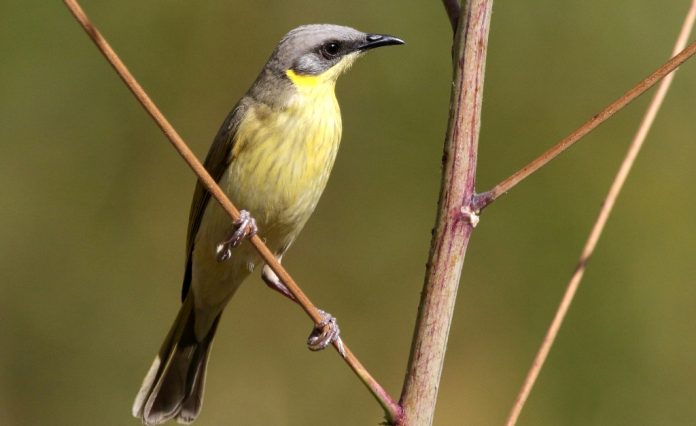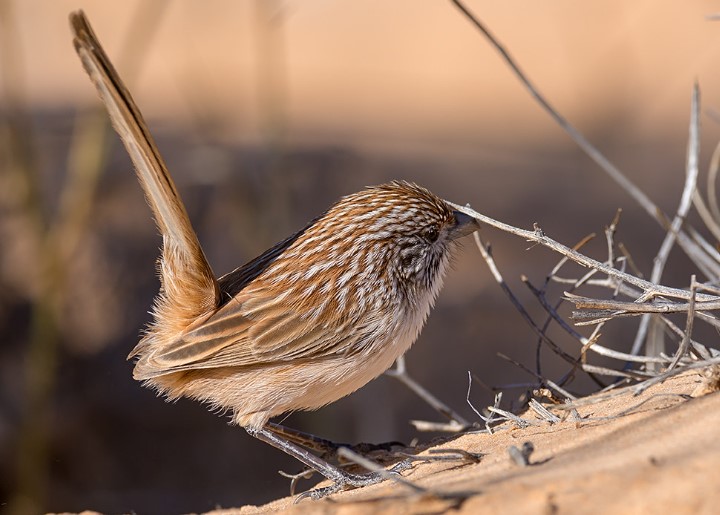Grey-headed Honeyeater call is single chek, chek in-flight; weak ‘alarm-clock’ trill. The song of Grey-headed Honeyeater is kwoyt-kwoyt-kwoyt, repeated rapidly on the same pitch.
Grey-headed Honeyeater (Lichenostomus keartlandi) inhabits the low scrubs in rocky breakaways, clefts in ranges, and on desert dunes across the arid mid-northern mainland, replacing their close relative, the Purple-gaped Honeyeater.
Like purple-gaped honeyeaters, they usually occur in small sedentary groups of two to five or six birds in low, mallee-like eucalypts, gleaning insects from their branchlets, honeydew, and manna from their foliage, and nectar from their flowers.

Most feeding is done in the canopy. To mark their territory, the groups do not make sounds in flights but chatter regularly through the day from vantage points perched in the crowns of shrubs and trees. Often, after protracted breeding in a good season, roving bands of 10 or more may follow flushes of blossoming.
The size of the is approximately 155–160 mm. Both sexes are similar; the male is a little larger. Upper parts are pale fawn-grey; crown pale grey; wings and tail washed citrine; and dusky gray wash from lores over ears, ending in acute yellow ear plume.

The underparts are light yellow, streaked faintly brown on the breast. The eyes are brown, and the bill is black. Also, the feet are gray-brown. The immature bird is a little duller than adults.
The nesting and breeding season is July–November, or after rain. Nest a flimsy cup of bark strips and grass bound with cobweb and slung from the rim in foliage, 1–5 meters up. The bird lays two eggs; whitish, lightly spotted with red-brown, more at the larger end; oval, about 20 x 14 mm.
Grey-headed honeyeater is found in desert eucalypt shrubs on dunes and hills across the mid-northern mainland, from Pilbara, Western Australia, to central Queensland. The bird is mainly sedentary.
Read More: White-winged Dove Call







